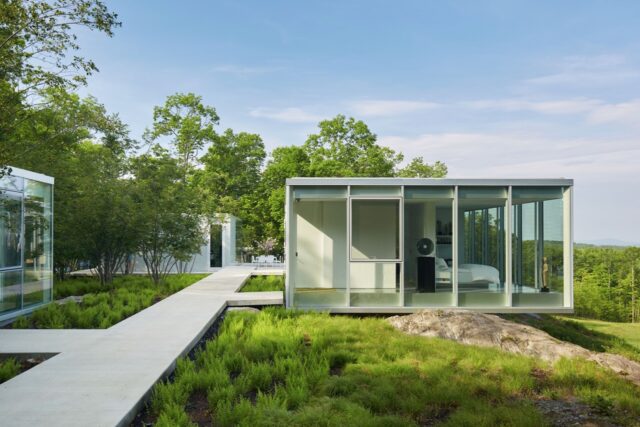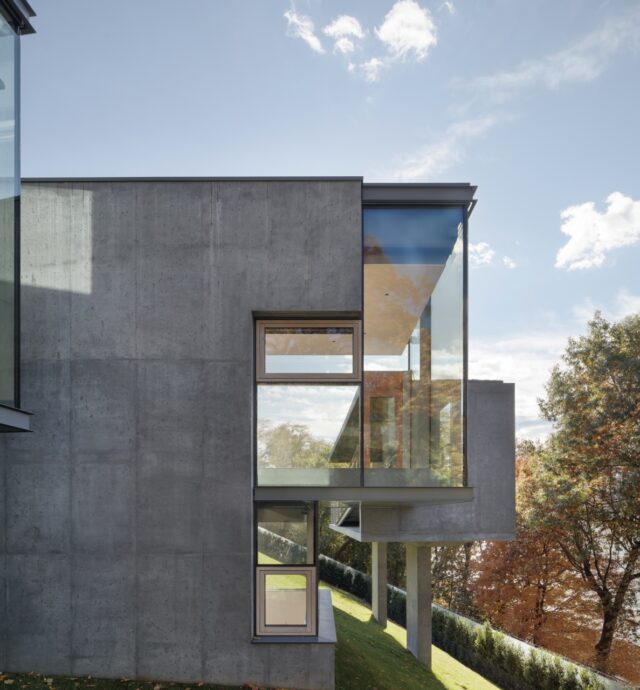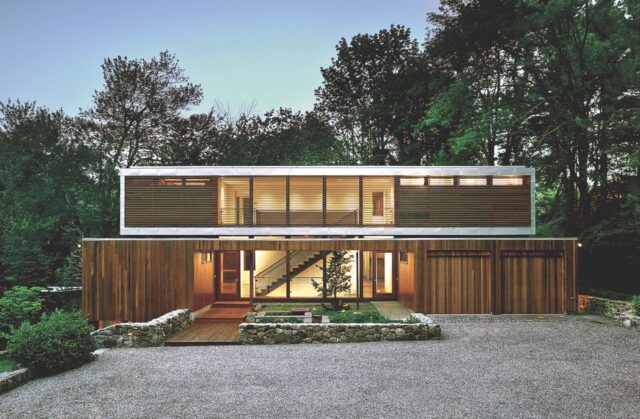
By David Prutting
I’m really not trying to talk you out of building a new house from scratch. But I encourage you to think twice—make that 12 to 15 times—before you do. I surely appreciate the romantic notion of building your own dream cabin or McMansion; it so happens that’s what got me in this business of homebuilding and remodeling nearly 50 years ago!
The process can be draining—more like a marathon than a 2-mile race. Let me think: extensive, exhilarating, exasperating, exhausting, and of course, expensive. You will meet and pay most of the following specialists: Realtors, architects, lawyers, civil and structural engineers, wetlands and soil consultants, landscape architects, permit expediters, owner’s reps, town officials, zoning building review boards, state inspectors and finally qualified builders. You will vet through probing interviews, proposals, plans and building moratoriums, and fight your way through township authorities to get to something a builder can price. Then we shock you into cost reality, and the redrawing begins. Our very fine people here at our company have what I sometimes refer to as a “bad” habit—they tell you the truth about what you’ll spend.
Most of our committed building contracts begin at this stage, as we often get hired for what we call value engineering or price consulting. Many builders offer this service where they work with your chosen design team to develop an acceptable, manageable budget. A word about the design team—choosing them is kind of like dating. It gets pretty intimate as you explain your living style needs and desires while enjoying and appreciating the feedback and ideas. Getting past the choosing of the design partner, now it’s time to entrust them to create while being receptive to thoughtful ideas. This can be a very rewarding and gratifying experience. I am a huge advocate for good design and there are plenty of very talented architects and interior decorators in our area. However, I encourage everyone in this situation to challenge the design intent when compelled and ultimately make sure, as the song goes… you get what you need. When in doubt, trust the professionals, as it’s very easy to second guess but not so to first guess.

How am I doing? Let’s talk about time and money. Your project will take longer and cost more than you expect or want. Any contractor with the phrase “on time and on budget” as part of their promotions—dismiss immediately. I remind my clients 19 out of 20 change orders originate from their side. Changes usually mean delays and we don’t want that. We will of course always accommodate these requests—after all, we’re in the service business. Numerous times I’ve heard, “There won’t be any changes on our job; we’re working hard in planning so we won’t have to make changes.” That’s well intended, but not realistic. As building plans take shape and become three-dimensional, ideas and refinements often materialize. At this point being all-in, make sure you get what you need. I’ve heard haunted clients lament something like: “I’m happy, but I really wish we added that bedroom window.” Make sure you get what you want.
Not scared off yet? OK; I’ve got more. Buying property obviously begins the process—if you can find any good lots. Some towns are all divided up and few or no raw properties are available, or what’s left is stony goat turf. How much is blasting? How much does it cost to drill a well? I once had a client balk at paying for the well drilling because at deep depths we only found salty water. Drilling is an unknowable cost going in, as it depends on the footage depth needed and the water quality found. I defended myself, reminding her that it was God’s fault, not mine, and we had to pay the luckless driller. So when seeking property here’s my advice: Look for existing houses—with a good setting, location, nice driveway, landscaping, etc.—needing a reincarnation. That usually means a tear-down. When building sites were more available, builders and designers would typically site and place dwellings optimally for drainage and daylighting, drill the wells, build the septic systems in the logical locations—in other words, all done and often reusable and what’s that term? Grandfathered in.

Many of you aren’t scared off and you’re going to do it anyway, so here’s some builder’s advice:
If your planned building has a usable attic space, then jam a stairway up to it somewhere—forget the pull-down stair things that snow dust when lowered. My first house, a simple 1920s farmhouse, had a full walkup stairwell behind a simple closet-like door, accessed in a corner of an upstairs bedroom. That attic space got great usage.
Put an exterior bulkhead-type entrance into your basement if it’s not otherwise accessible from the outside. Give service people access other than through your kitchen or foyer.
Overhangs are like the bill of the cap—they protect what’s underneath from the elements. There’s a design trend to eliminate or minimize them—not my vote. Also, learn about the causes of ice damming (almost always caused by heat loss through the roof planes).
Consider or have lined up a competent therapist to quell the anxiety you will inevitably encounter about decision-making (not so simple, particularly, depending on how many options you can afford) and the accompanying marital discord.
Remember that square foot samples of stone, tile, slabs etc. don’t always match up with the final larger products. The smart projects now involve a lot of full-scale mockups, sometimes involving full-size exteriors with walls, roofs, windows and other elements.
A fireplace in a bedroom should have a raised hearth if you want to see the flames from the bed. And make it a gas log burner—I doubt you’re going to tote wood up the stairs too often.
Lesson learned: Every time we’re involved with architectural or finished concrete, it’s an experiment with unpredictable outcomes. The stuff has a mind of its own. I have a client to whom I will forever be indebted. After a small sample was approved of a dyed, finished, polished concrete floor, the same mixture formula was installed on an entire building and came out a shockingly different shade and I was confronted by an angry architect. The owner entered the building and announced how much she loved the color! And we love her! Another experience involved a form-lined poured concrete wall on a tennis court that unexpectedly came out looking like a Keith Haring lithograph; not what was intended. I could go on…
All that said: I believe that for all of my clients who have been through this: It has been a truly rewarding experience. So, if you’re brave, inspired and resolved to go for it, pick a great team, sell a lot of stocks and learn to chill out. Also extend the lease on your rental—it’s likely you’ll need it. prutting.com





